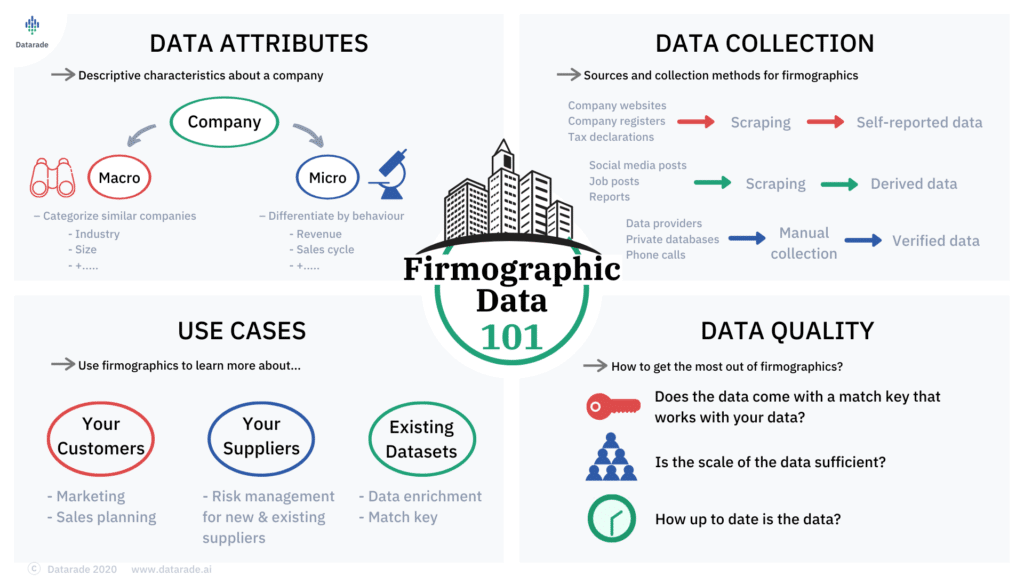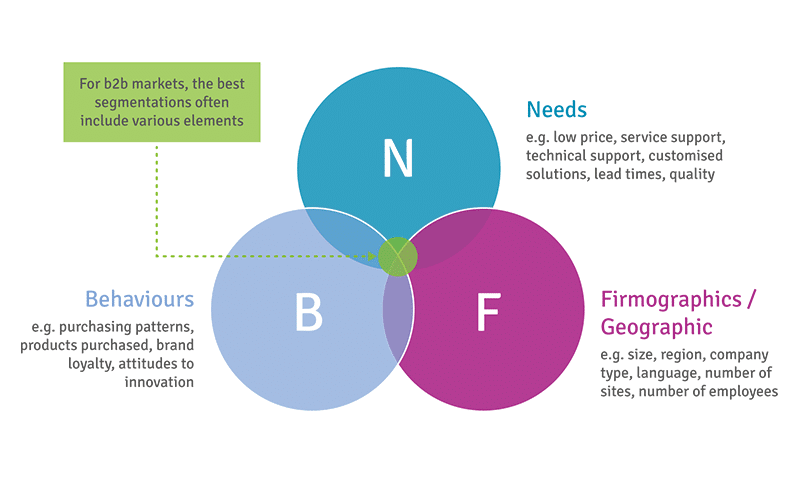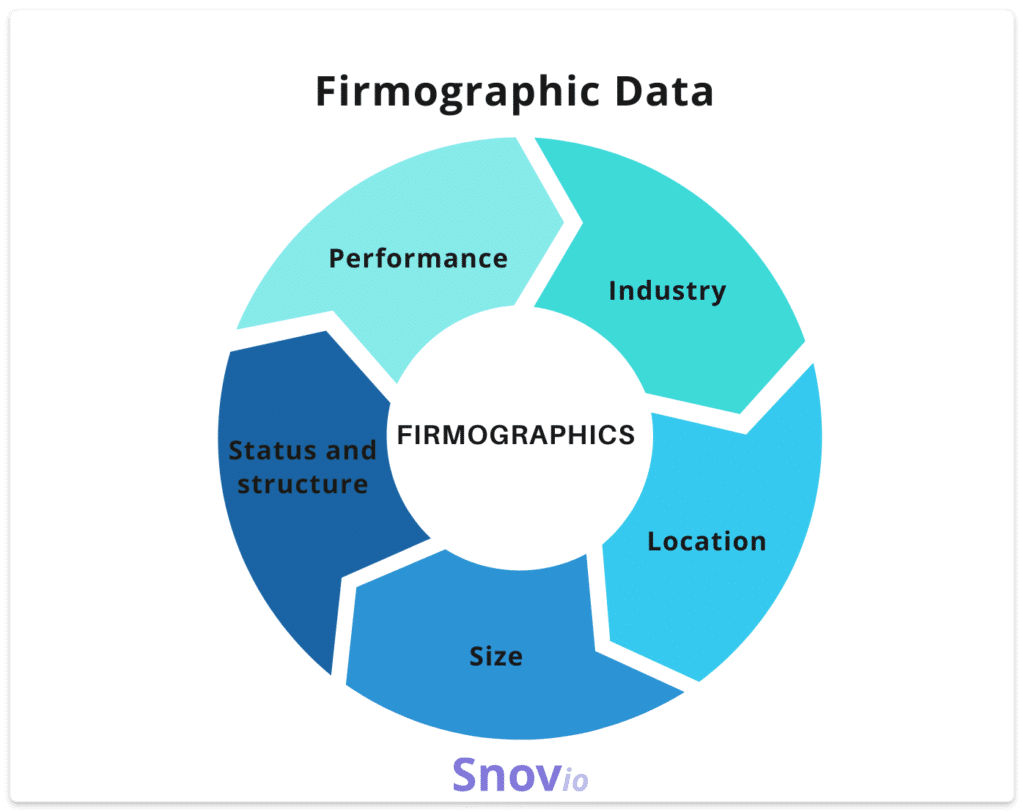8 Ways to Use Firmographic Data to Build a Better Pipeline

By 2025, 60% of B2B companies will have fully adopted a data-driven approach to sales. But even among sellers that have already made this transition, data is not always being used to its full potential. While nearly nine out of ten B2B companies say that data quality is an important factor in their sales and marketing decisions, only 38% are leading with account-based marketing campaigns that rely on high-quality data and effective personalization.
To succeed in the modern B2B marketplace, you need high-quality data to maintain a consistent flow of leads that convert. Data insights help sellers zero in on the most promising leads and nurture them with optimal messaging and content.
That’s where firmographic data can help. Firmographic data defines the characteristics of your potential customer’s organization in the same way that demographic data defines individual consumers in B2C.
Using it ensures that your team focuses their time on leads and firms that are well-qualified for your product or service, and that your messaging is relevant to your target audience.
In this post, we’ll look at firmographic data, how it’s collected, the benefits of using it, and learn 8 ways to use it to build a better B2B sales pipeline.
What is firmographic data?
The customers for B2B products and services aren’t individuals, but businesses – organizations made up of lots of people of varying demographics. It’s true that tailoring your messaging to the individuals who have purchase-making authority within the organization can be a highly effective tactic. However, this comes into play late in the sales cycle. To expand your sales pipeline with more qualified leads, you need better targeting at the organizational level, which is where firmographic data comes into play.
Just as a B2C company wouldn’t serve the same ads to a college student on a tight budget and a retiree with savings to burn, there are big differences in how a B2B seller would approach a small, scrappy startup versus a large, well-established corporation. Firmographic data is what allows you to segment organizations into categories that make sense for sales and marketing purposes.
Some examples of firmographic data are:
- Industry sector
- Geographic location
- Size, in terms of both physical facilities and personnel
- Performance metrics, such as total sales, quarterly revenue, and growth
- Ownership structure
This collected data is used to create functional marketing segments, effective personalization, and targeted sales strategies aimed at more qualified leads.
How is firmographic data collected?
The collection methods for firmographic data aren’t necessarily all that different from regular demographic data, but it’s important to be aware of all the major sources, so you can have them covered.
Plenty of firmographic data is public information, so it’s always a good idea to research the data that’s out there for anyone and everyone to see. You can learn a lot just by visiting Google and your target’s website. There are also vendors who will sell you detailed, verified firmographic datasets, along with various software tools for scraping data off the web. Social media can also be a great source of information, especially LinkedIn.
Forms, surveys, landing pages, and other lead generation tools can also be repurposed to collect firmographic data. You should also be tracking your website activity to keep tabs on where your leads are in their customer journey, enabling you to correlate firmographic data with insights into behavior, interests, and readiness to purchase.
The Benefits of Using Firmographic Data
Firmographic data helps you learn more about the organizations you’re trying to sell to — how they operate, what they want, and how to communicate with them as effectively as possible. It also lets you segment your leads into groupings based on shared characteristics, enabling you to create targeted messaging and content even more efficiently.
A rich set of firmographic data, combined with demographic data about the key decision-makers within the organization, is the essential component of a successful account-based marketing campaign. It assists you in finding leads who will be the most receptive to your solutions and allows for personalized messaging at every stage of contact, from the initial lead capture to the post-purchase customer service follow-up.

8 Ways to Use Firmographic Data to Build a Better Pipeline
1. Get High-Quality Data
Firmographic data only helps you out if it’s accurate. If your sales pipeline is built on inaccurate or narrowly-scoped data, it’s going to end up filled with leads that are unqualified and don’t convert. Formulate a data strategy to determine the scope of the data you need, source it carefully, and enrich it with contextual information whenever possible.
Good data hygiene practices, such as ongoing review and normalization, can preserve the quality of your data over time and keep it from becoming harmfully outdated.
2. Better Lead Qualification
All leads are not created equal. Some are ready to convert soon, and some are not. Rich firmographic data can tell you which is which. You can create a lead scoring system based on the data, allowing you to segment and prioritize leads with fine-grained precision. Using firmographics this way minimizes the chances of your sales team wasting time on leads that look good on paper but aren’t ready to buy – and increases your conversion rate.
3. Identify and Create New Segments
Data analytics can yield unexpected insights and opportunities. A sift through your firmographic data may reveal a high level of interest in your solutions from a geographical region or niche industry that you haven’t singled out for targeting. By creating new audience segments based on insights like these, you can capitalize on these opportunities and expand your customer base.

4. Create Better Messaging
If you send a lead a cheery pitch based on growth and expansion when they’re in the middle of downsizing, you probably haven’t gotten yourself any closer to a sale, even if you have a solution that fits their current needs.
Messaging needs to be relevant and personalized if it’s going to have any chance of getting anyone’s attention. That requires understanding not just the individual recipient, but also the organization they represent. Firmographic data helps you understand where an organization is now, where they’re going next, and what they might need from you to get there.
5. Upgrade Your Inbound Marketing
Rich firmographic data allows you to take advantage of filtering and keyword options on sites like LinkedIn. It allows you to launch highly cost-effective and personalized inbound marketing campaigns tailored by industry, job position, company size, or any other criteria that makes sense.
6. Improve Your Account-Based Marketing Efforts
The B2B sales process is rarely swift or straightforward, because you are often required to win over multiple decision-makers before a final purchase can be reached. ABM addresses this complexity by providing a framework for direct, personalized engagement with the target organization and its key individuals.
ABM succeeds or fails on the strength of the data that informs it, so having solid firmographic data is an absolute requirement that can even help you automate some ABM processes.
7. Precision-Target Your Paid Ads
Running paid advertising on social media or search engines can be wasteful if they end up getting displayed to the wrong audiences. Firmographic data can ensure that your ad dollars are spent on targets who fit your exact customer personas. Here again, you should make use of LinkedIn’s B2B-friendly platform and highly granular audience filtering options to create ads that reach exactly the right audience.
8. Assess ROI
Firmographic data is often necessary to determine the potential revenue gains from any given lead. On a simple level, company size will let you know whether they’re buying the “basic” or “enterprise” package. But richer data can help you project their likelihood of purchasing future upgrades or added services. This information allows you to more accurately assess the ROI of the resources you are allocating toward closing that deal.
Firmographic Data Builds Pipelines
You have to understand your customer to sell to them, and in B2B, your customers, ultimately, are firms. Collecting and leveraging firmographic data allows you to lay the foundation for a sales pipeline that brings in steady traffic of qualified leads. It also can be used to inform and enhance your approach at every point along the buyer’s journey, increasing sales through better targeting and more effective personalization.
Developing a rich firmographic profile starts at your earliest contacts with a prospective customer, so it’s important not to miss those critical first opportunities. Tools like Trendemon can track visitor interactions on your website and allow you to start gathering firmographic data from the very beginning. By employing firmographic data in these ways, you’ll create a profitable B2B sales pipeline that will never run dry.
